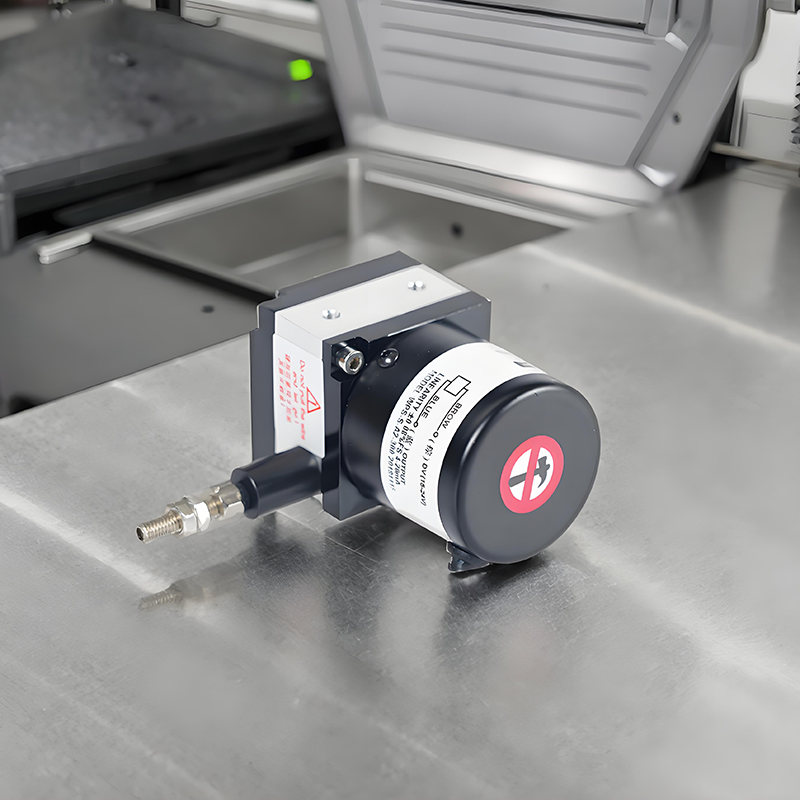Understanding Draw Wire Sensors in Outdoor Environmental Applications
Draw wire sensors have emerged as crucial measurement devices across various industrial applications, particularly in challenging outdoor environments. These robust position measurement solutions combine precision with durability, making them increasingly popular for external installations. As industries continue to automate and optimize their operations, the demand for reliable outdoor sensing technologies has sparked significant interest in draw wire sensor implementations.
The versatility of draw wire sensors in outdoor settings stems from their fundamental design principles and advanced manufacturing techniques. These sensors utilize a highly engineered wire mechanism that extends and retracts to measure linear displacement with remarkable accuracy. When properly implemented, they can withstand diverse environmental conditions while maintaining consistent performance metrics.
Core Components and Environmental Protection Features
Robust Housing and Sealing Technologies
Modern draw wire sensors are engineered with sophisticated housing materials that provide exceptional protection against environmental elements. The outer casing typically features high-grade stainless steel or reinforced aluminum construction, offering superior resistance to corrosion and physical impacts. Advanced sealing technologies, including IP67 or IP68 rated enclosures, ensure complete protection against dust ingress and water exposure.
The wire mechanism itself incorporates special coating treatments that enhance its durability in outdoor conditions. Manufacturers often utilize marine-grade materials and specialized surface treatments to prevent rust and degradation, even in coastal environments where salt spray poses significant challenges.
Internal Protection Mechanisms
The internal components of draw wire sensors are equally well-protected against environmental factors. Premium models feature hermetically sealed electronics compartments that shield sensitive measuring elements from moisture and contamination. The wire drum assembly often includes additional protective barriers and specialized lubricants that maintain smooth operation across extreme temperature ranges.
Temperature compensation systems are integrated into high-end draw wire sensors, ensuring accurate measurements regardless of thermal expansion or contraction effects. This is particularly important in outdoor installations where temperature variations can be substantial between day and night or seasonal changes.
Performance Capabilities in Outdoor Environments
Weather Resistance and Durability
Draw wire sensors demonstrate remarkable resilience in challenging weather conditions. They maintain operational stability in temperatures ranging from -40°C to +85°C, making them suitable for both arctic and tropical environments. The sensors' design accounts for thermal expansion, ensuring measurement accuracy remains consistent across this broad temperature spectrum.
Advanced models incorporate UV-resistant materials that prevent degradation from prolonged sun exposure. This feature is particularly valuable in applications where sensors are installed in direct sunlight or locations with high UV intensity.
Long-term Reliability and Maintenance
The longevity of draw wire sensors in outdoor installations is enhanced by their minimal maintenance requirements. The enclosed design prevents debris accumulation and reduces the need for regular cleaning or servicing. Most units are rated for millions of cycles, providing years of reliable service even in continuous operation scenarios.
Regular maintenance protocols are straightforward and typically involve basic visual inspections and occasional verification of mounting security. The robust construction minimizes the risk of mechanical failures, contributing to reduced downtime and lower operational costs.

Installation Considerations for Outdoor Applications
Mounting and Positioning Guidelines
Proper installation of draw wire sensors in outdoor environments requires careful attention to mounting orientation and protection from direct environmental exposure. Strategic positioning can significantly extend sensor life and maintain optimal performance. Installers should consider factors such as water drainage paths, wind exposure, and accessibility for maintenance.
Additional protective measures, such as weather shields or custom enclosures, may be implemented in extremely harsh environments. These supplementary protections can further enhance the sensor's durability without compromising its measurement capabilities.
Cable Management and Connection Protection
The electrical connections of draw wire sensors require special consideration in outdoor installations. High-quality cable glands and proper strain relief mechanisms prevent moisture ingress through cable entry points. Using appropriate outdoor-rated cables and implementing proper routing techniques ensures signal integrity and system reliability.
Advanced connection options, including industrial-grade connectors with IP67 ratings or higher, provide additional protection against environmental factors. These components are essential for maintaining consistent electrical performance in wet or humid conditions.
Common Industrial Applications
Construction and Infrastructure Monitoring
Draw wire sensors excel in construction applications, where they monitor structural movements, measure crane positions, and track elevator systems. Their robust design makes them ideal for long-term installation in buildings and infrastructure projects, where they provide critical position feedback in all weather conditions.
In bridge monitoring applications, these sensors help track thermal expansion and structural deformation, contributing to improved safety and maintenance planning. Their reliability in outdoor conditions makes them valuable tools for civil engineering projects.
Agricultural and Resource Extraction
The agricultural sector utilizes draw wire sensors for various applications, including automated irrigation systems and harvesting equipment positioning. Their weather-resistant properties make them suitable for continuous outdoor operation in farming environments.
In mining and quarrying operations, these sensors provide essential position feedback for heavy machinery and conveyor systems. Their durability in dusty, wet conditions makes them ideal for these demanding applications.
Frequently Asked Questions
How long do draw wire sensors typically last in outdoor installations?
Draw wire sensors designed for outdoor use typically have a service life of 5-10 years when properly installed and maintained. Many units exceed this expectation, especially in moderate environmental conditions. The actual lifespan depends on factors such as exposure to extreme weather, maintenance practices, and operational intensity.
What maintenance is required for outdoor draw wire sensors?
Maintenance requirements are minimal but important. Regular visual inspections every 3-6 months, checking for physical damage or wear, and verifying mounting security are recommended. Additionally, ensuring electrical connections remain sealed and testing the measurement accuracy annually helps maintain optimal performance.
Can draw wire sensors function reliably in extreme temperatures?
Yes, industrial-grade draw wire sensors are designed to operate reliably in temperature ranges from -40°C to +85°C. Special models are available for even more extreme conditions. Built-in temperature compensation systems ensure measurement accuracy across the entire operating range.
What protection rating is recommended for outdoor installations?
For outdoor installations, draw wire sensors should have a minimum protection rating of IP67, which ensures complete dust protection and water resistance when immersed up to 1 meter. In particularly harsh environments or locations with frequent water exposure, IP68-rated sensors are recommended for additional protection.

